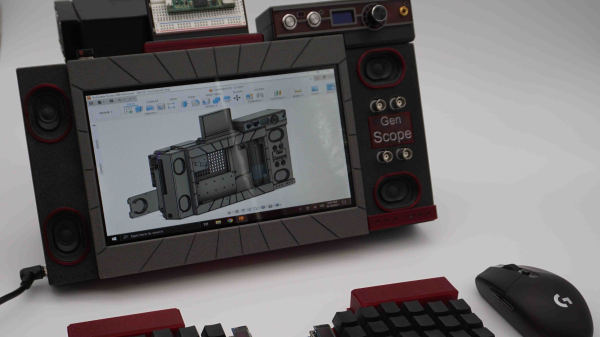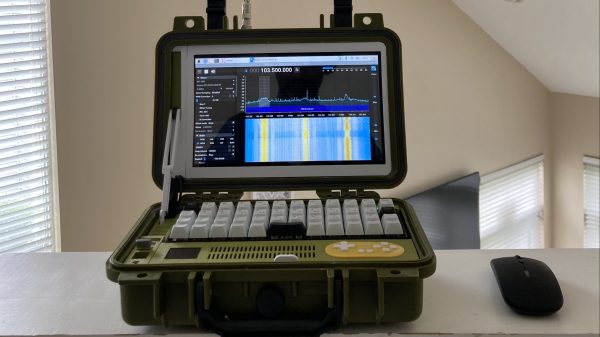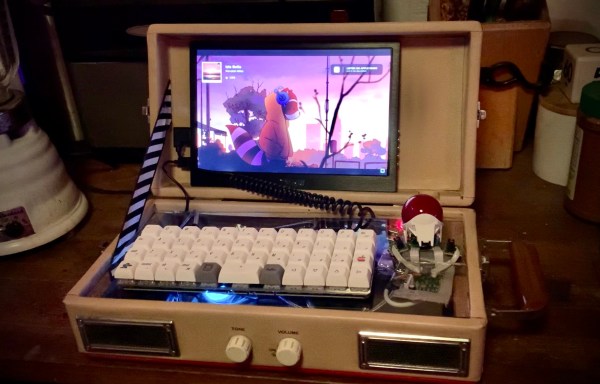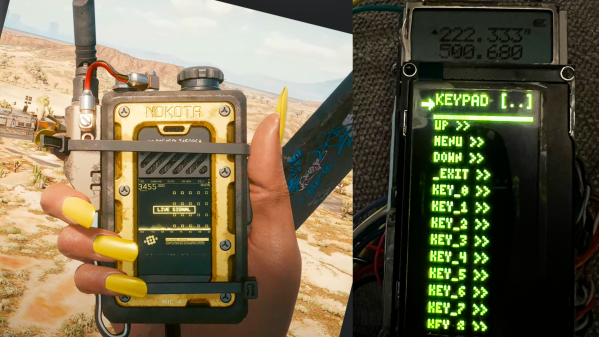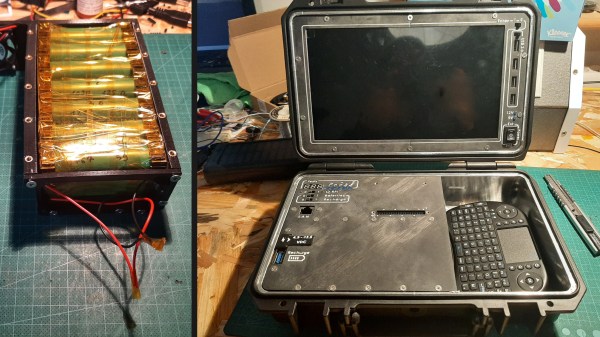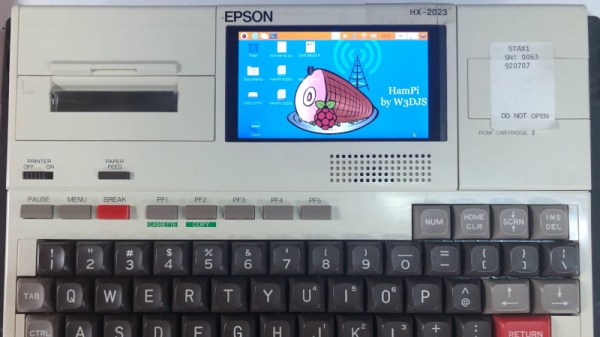[Josh] has a child and what do children like more than stuffing random things into their mouths? Pushing buttons, twiddling knobs, and yanking things of course! So [Josh] did what any self-respecting hacker would do and built his little man a custom cyberdeck.
The build follows the usual route of some electronics wedged into a pelican-style waterproof case — which is a good choice for this particular owner — a repurposed all-in-one LCD video player in the lid and a bunch of switches in the base. The player is apparently a V100-base SBC the likes of which are used in shops for those annoying looping promotional videos, but it doesn’t really matter if all it’s doing is being a focus point.
There is no connection from the base to the ‘display’ but that doesn’t matter here. The base is the fun part, with lots of old-school toggle switches and rotary knobs to play with and a load of LEDs to flash in mysterious ways. The guts of this are controlled via an Arduino Mega 2560, with copious amounts of hot glue on display in true hacker style. On the coding side of things, [Josh] used ChatGPT to produce the code from his prompting and Wokwi to simulate it before deployment to the hardware.



